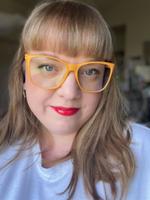

Participants will be motivated to address learning and attention issues through a better understanding of their students’ experiences.
Participants will be able to describe a basic framework of the Universal Design for Learning and ways they can apply to classrooms.
Participants will leave with strategies on how to select and manage tools that support students regardless of their learning style or ability.
Participants will get the opportunity to explore how to modify a lesson in real-time to incorporate UDL principles.
Essential Question: How can we remove barriers to learning for all of our students including those with learning and attention issues?
00:00 - Introduction to UDL: By viewing our lesson design through the framework of Universal Design for Learning (UDL), we can create a welcoming and effective experience for all students, with and without disabilities. Today, we’ll examine five easy ways to design with a UDL framework and walk step-by-step through examples of the process of selecting tools and incorporating them into our lessons.
Introduce basic concepts of UDL and identify current practices of the group that already follow the principles.
Outline examples to make your classroom more inclusive
00:10 - Model: How can we select tools and design lessons to fit the needs of all of our students? What do the suggested tools have in common? What pedagogical techniques are employed?
Demonstrate designing a lesson that integrates using these tools.
Provide tips for facilitating a classroom that incorporates these tools and strategies.
00:25 - Explore: Attendees are given time to explore and modify a lesson; they will be encouraged to work in pairs/small groups and collaborate with those near them.
Work with your partner or group to locate a lesson from our library of resources that you’d like to modify.
Utilizing some of the proffered tool recommendations (or others from peer recommendations) for each of UDL category, attendees will move through their selected lesson/activity and modify the lesson to incorporate UDL principles.
Attendees will be offered the choice of how they choose to share out (e.g. post-it, whole group, video recording via Flip, etc.).
00:55 - Share: Tips for facilitating a UDL classroom that teachers can implement immediately and additional resources for deepening practice.
Bray, B., & McClaskey, K. (2017). How to personalize learning: a practical guide for getting started and going deeper. Thousand Oaks, CA: Corwin.
Edyburn, D. L. (2010). Would You Recognize Universal Design for Learning if You Saw it? Ten Propositions for New Directions for the Second Decade of UDL. Learning Disability Quarterly, 33(1), 33-41. doi:10.1177/073194871003300103
Hall, Tracey E., Anne Meyer, and David H. Rose, eds. Universal design for learning in the classroom: Practical applications. Guilford press, 2012.
Meyer, A., Rose, D. H., & Gordon, D. (2014). Universal design for learning: theory and practice. Wakefield, MA: CAST Professional Publishing, an imprint of CAST, Inc.
Rapp, W. "Universal design for learning in action." Baltimore, MD: Brooks (2014).
Extensions:
Voice in Voice Typing
Mercury Reader
Read & Write
Grackle Slides